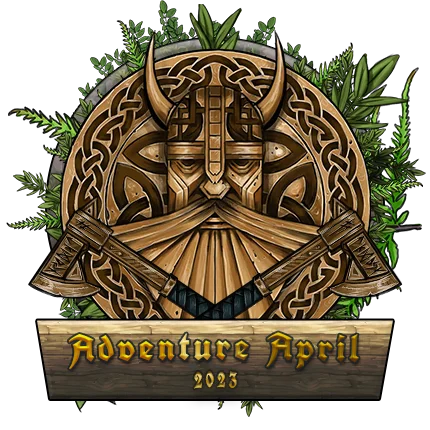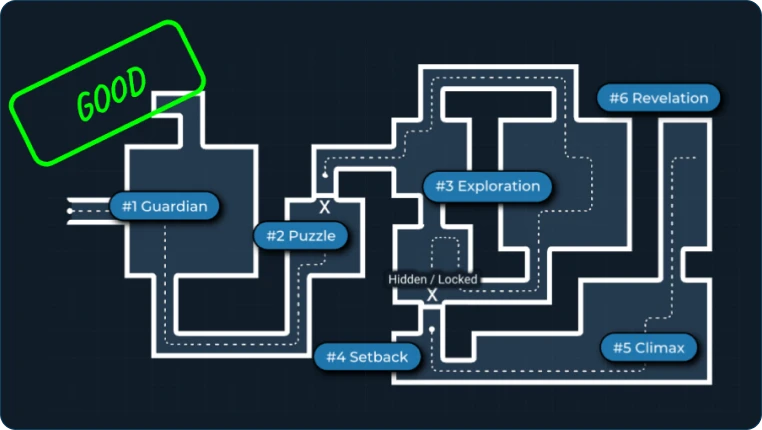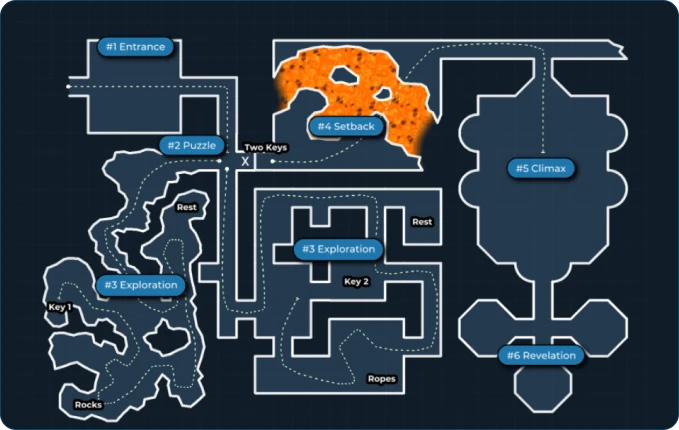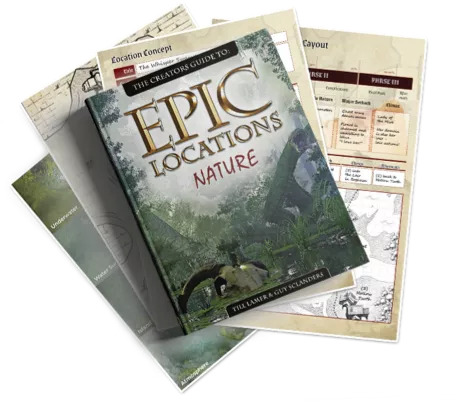Area 1 – Set-up
Setting up the location. This might be a map on its own or just a description depending on how you want the heroes to encounter the location. This sets up the mood of the location and hints at what might happen within the map.
A grim and dark village squats at the edge of a dense but lifeless forest. Lichen and moss shroud each dead tree to look like specters holding their boney fingers to the sky in grief.
That’s a good description and may be all that is needed. A few surly village inhabitants and the area is set. You may need a map of the village or perhaps of the outlying forest if you want to include combat or have something that needs positional data.
Area 2 - Challenge
Not everything can be solved with steel. After we've set the mood with the first area, the second one may need to defy the heroes by being difficult to get past. The player may have to figure out how to cross a massive chasm? Can your party get across a fast-flowing river without having to suffer the currents? This is also a great time to familiarize our players at the table with the general mood of the adventure. A quirky, funny adventure might have an odd guardian asking strange questions - a grim dark adventure might comfort the players with the seemingly inevitable doom that awaits them inside.
Area 3 - Explore
You've now fully set the scene. The players know the location, are familiar with the story. All that may still be a mystery is to fully understand what it is, how to cope with it, and how to deal with it. The more the heroes engage with the region, the more they should adapt and learn. It should feel like they are making progress. This is also the "Point of No Return". This might be because of a dramatic change to the location or simply a resource issue where the heroes have run out of supplies. You need to provide the party with clear guidance that going forward is a better option than trying to go back.
Area 4 - Setback
Build tension. Just as your players have learned to deal with the location, we need to step up the situation with new information. The river suddenly turns into rapids, the mountain is suddenly a plateau and new information needs to be revealed or discovered. As game masters, we use the setback to raise the stakes, drain our heroes’ resources and build the tension for the next area.
Area 5 - Climax
The final conflict. Our heroes face their villain or should have accomplished your goal of the adventure. This should be the epitome of the story - and of course the maps. After this the remainder of the location should be easy to guide through.
Area 6 – Aftermath
Keep the story going. The heroes should know that this isn’t the end and instead are just part of a bigger narrative. Unless there really isn't any epilogue and the heroes are done. Reward the heroes and leave as quickly as possible either setting up the next location or ending the story.




